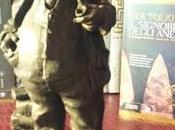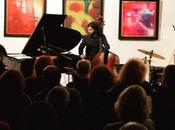Come ho avuto modo di anticipare nel post che ho scritto su Non solo Turisti, dovendo fare una classifica di ciò che mi ha colpito di più nelle due giornate milanesi sicuramente al primo posto metto L’Ultima cena di Leonardo da Vinci.
L’opera è famosissima e grazie al successo letterario de Il Codice Da Vinci di Dan Brown ormai anche i profani di storia dell’arte la conoscono. Un conto, però, è aver visto una rappresentazione del dipinto in un libro di storia dell’arte o averne sviscerato la simbologia recondita insieme a Robert Langdon-Tom Hanks; tutt’altro è ritrovarsi di fronte alla parete su cui è impressa quest’opera pittorica di 4,6 x 8,8 metri. Io sono rimasta a bocca aperta per 15 minuti (questa la durata standard della visita) e so che non guarderò più un’immagine de L’Ultima Cena con lo stesso spirito di prima.

Ritrovarmi a pochi passi da questo capolavoro del Rinascimento italiano mi ha fatto ricordare perché mi è sempre piaciuta la storia dell’arte; avere accanto Stefania, che nutre una passione viscerale per Leonardo, ha reso l’esperienza unica e indimenticabile. La competenza di Stefania mi ha permesso di notare dei particolari fondamentali, tra cui la volontà dell’artista di rendere i chiaroscuri attraverso una combinazione tra la luce che proviene dal soggetto dell’opera e quella reale, che all’epoca proveniva dalle tre finestre poste sulla parete alla sinistra del dipinto.
Per vedere da vicino L’Ultima Cena occorre armarsi di pazienza e monitorare il sito internet per accaparrarsi un biglietto. Essendo questo uno dei siti più visitati di Milano, la prevendita dei biglietti avviene con largo anticipo. Il costo è di soli 8,00 € e vi garantisco che sono soldi spesi bene.

Ovviamente opere di questo calibro non si possono fotografare, per cui purtroppo non ho immagini a corredare quanto scrivo. Un peccato, certo, ma l’importante è che ci sia concesso almeno di vederle. Al massimo, possiamo sempre comprare delle cartoline

##########
As I anticipated in the article I wrote on Non solo Turisti (link soon available), if I should mention what affected me most during my short visit to Milan I’d definitely choose The Last supper by Leonardo da Vinci.
This work is very weel known in itsself but after the bestseller by David Brown, The Da Vinci Code, it became rather famous even among people who don’t have a clue on art history. Well, looking at a representation of the famous painting in an art history book, or gutting its hidden symbolism together with Robert Langdon-Tom Hanks is one thing; standing in front of the wall which hosts this painting of actually 4,6 x 8,8 metres is something totally different. I was speechless for the whole visit (15 minutes as allowed) and I’ll definitely look at any illlustration of The Last Supper in a different way hereafter.

Standing only a few meters from this masterpiece of the Italian Renaissance reminded me why I always liked art history. But the experience was far more unique since there was a number one fan of Leonardo next to me. Indeed, thanks to Stefania’s expertise I could take note of many fundamental details, such as the artist’s desire to make the light and shade by combining the light given by the subject with real light, this latter coming from three real windows on the left wall.
Curious to see The Last Supper? You’ll need some patience then and start monitoring the website to get a ticket. As this is one of the most visited sights in Milan presale starts well in advance. The ticket only costs 8,00 € and trust me, the visit is really worth it.

I’ve got no images to accompany my words since works of this kind cannot be photographed of course. And that’s a pity, to say the least, but maybe we should just be grateful for being allowed to actually see them. After all, there’s always the possibility to buy some postcards 






